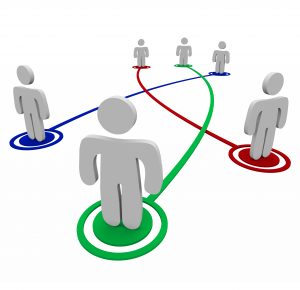Whether you’ve noticed it or not, the Internet of Things (IoT) is spreading and influencing your lifestyle. Look no further than your car and you’ll see an inventory of gizmos and gadgets no one had dreamed of just a few short years ago.
GPS, Bluetooth and video/music streaming now sells more cars than torque or gas mileage.
Home appliances used to mean toasters and blenders. Now your appliances talk and listen.
You can control your home security from any location in the world where there’s a WiFi connection.
Doctors can diagnose medical conditions from hundreds of miles away.
And shopping sites are full of deals to bring you into the world of IoT.
The Internet of Things is bringing a whole new set of challenges to both the vendors and users of the technology.
1. The Learning Curve
As an IoT vendor, you understand you’re delivering a consumer product that’s new to the user. Why is that significant?
Consumers now have a learning curve with home appliances and smart devices of different kinds, and it’s not just “where’s the on/off button” or “how do I set my blender to purée?”
That is the case with smart locks, smart cams, voice-operated hubs, lights, wearables, speakers and many others.
We also have to teach them why interconnectedness is good!
IoT presents a major shift in how consumers relate to and interact with products. And this, in turn, presents major challenges to companies delivering on the promise of IoT.
2. How To Deliver the Technology
To be successful at marketing consumer IoT – which includes home automation, wearables, pet security, as well as sleep and fitness devices (among many other categories)- requires vendors to brand such products as important, secure and useful to consumers.
And they’ve got to be easy to use. Anything difficult to understand or use will disarm and disappoint customers.
As a result, delivery plays a much more important role than before. Delivery is more than just packaging and handling.

It begins with product design, image, and branding. Consider the sleek appearance of Alexa and Google Home. Minimalist design full of functionality and utility.
Branding of any consumer IoT product must show that it actually works at tasks meaningful to the market.
Setup and instructions of the device itself and their accompanying mobile apps must be minimal and effective for consumers with no time – nor inclination – to read or spend much time configuring their settings.
Consumers want plug-in efficiency, and you need to give it to them.
3. Customer Experience
As IoT products multiply, so do the hubs that look to integrate them, and their accessories. Think Alexa, Google Home, Apple Pod, Samsung SmartThings, Nest and a number of others.
Consumers are assaulted with competitive products with only slight differentiation in the eyes of the customer, as vendors are rushing to get products into the early adopter phase of this market. These products need to integrate with the various hubs to deliver on their promise to automate our lives in some way.
As a vendor of the device that must talk to sometimes more than one hub, you risk confusing consumers during this phase.
Many of the challenges we see at Infolink-exp that customers struggle with, have to do with compatibility between products, mobile apps and hubs, integration, security and usability.
At some point in the next few years, we’ll get to a market correction, where a major shakeout and consolidation in vendors is expected, but in the meantime these various IoT ecosystems are forming and looking to both gain ground and integrate with one another. Vendors must strive to deliver a customer experience that does not intimidate users and helps them cope with the multitude of products and technologies being offered to them.
Eventually, some level of consolidation will probably be a good thing and also help consumers who both want and need their IoT ecosystem to work simply, efficiently and affordably.
4. Maturity of the Technology
Much of the emerging technology is still relatively immature. Lacking a consistent and universal ecosystem, devices must communicate better amongst themselves and with their respective hubs.
For example, until vendors, connectivity devices and consumers are on the same page, security is still not airtight. There is security exposure to users in the neighborhood, and there are still gaps that leave devices open to hacking, denial of service attacks and ransomware.
Part of the maturity challenges also include innovating vendor business models as well. An increasing numbers of vendors are promoting products that require service subscriptions. Just like buying a smartphone and paying monthly service, you are now being asked to pay for certain services associated with your IoT home security or automation system, and other IoT installations.
Even though it may be difficult to sell the concept initially to the consumer market, business is going the subscription-route. B2B buyers are used to the subscription obligations attached to CRM, HRIS and other SaaS innovations, and consumers technology is catching up.
5. Retaining Customers In A Consumer Electronics/SaaS dual Reality
As IoT expands with next-generation products and systems, gaining, securing and retaining customers becomes a priority.
Customers tolerate software bugs more readily than they do malfunctioning hardware. They expect their product to work as described. It must function flawlessly to retain their interest. Customers want flawless performance, and they want that value to be priced fairly.
Hardware is the core product in IoT offerings, and vendors must deliver this hardware free of operational defects, as is usually the expectation for consumer electronics. However, the dual reality for IoT vendors is that they must also support software applications and connectivity protocols, both embedded in their hardware and in their accompanying mobile or web apps. The software piece raises issues around connectivity, compatibility (with hubs and various mobile platforms), security settings and others.
Vendors should be ready to accompany users in their IoT journey with customer support services that address any negative feedback, increase adoption and help users capture the benefits promised by the technology.
The IoT Challenges We Manage
IoT is shaking up product innovation, e-commerce, revenue models, automation, consumer electronics, data footprints, and more. Its rapid growth is challenging product branding, delivery and customer values.
Even where vendors are succeeding, they are subject to rapid change, competition, and replacement. And, as IoT approaches the shake-out phase of its evolution, it needs integration and support.
It needs help in connecting manufacturers and tech startups and end users learning to cope with this new level of complexity in their lives. The technology companies bringing IoT to life also need help in identifying and resolving their customer experience and scalability challenges, as the IoT revolution evolves from the tech-savvy consumer with taste for all things new to the larger majority of adopters.
Companies like Infolink-exp provide value in supporting the leading IoT vendors to tackle customer support and education challenges, deliver value to consumers, and provide a customer experience that will move the ball forward for all of us.
Read more about the specific challenges described in the next chapters of our IoT Challenges series. Next: The Complete Guide to Securing your Smart Home.





